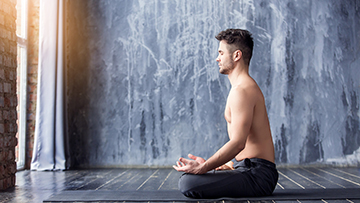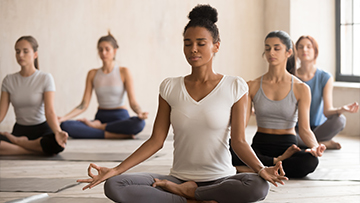Common Meditation Posture Mistakes
Meditation Posture Mistakes How to Fix Them
Meditation is a practice that brings numerous benefits, from enhanced mental clarity to reduced stress levels. However, the effectiveness of your meditation can be compromised by incorrect postures. Many practitioners, especially beginners, often make common posture mistakes that can lead to discomfort and distraction. In this article, we will identify these common mistakes and provide practical solutions to correct them.
Mistake 1: Slumping or Hunching Over
One of the most frequent mistakes is slumping or hunching over during meditation. This posture can lead to back pain and restrict breathing, reducing the effectiveness of your practice.How to Fix It:
- Straight Spine: Ensure your spine is straight but not rigid. Imagine a string gently pulling the top of your head towards the ceiling.
- Use Support: Sit against a wall or use a meditation chair with back support to help maintain proper alignment.
- Regular Check-ins: Periodically check your posture during meditation. If you notice you're slumping, gently correct it.
Mistake 2: Sitting Too Rigidly
While maintaining a straight spine is important, sitting too rigidly can cause tension and discomfort, especially in the shoulders and neck.How to Fix It:
- Relaxation: Aim for a balance between straight and relaxed. Keep your shoulders down and relaxed, and allow your hands to rest comfortably on your knees or in your lap.
- Gentle Movements: Occasionally, gently roll your shoulders or stretch your neck to release tension.
Mistake 3: Incorrect Leg Position
Improper leg positioning, such as crossing your legs too tightly or not supporting your knees, can lead to discomfort and numbness.How to Fix It:
- Use Cushions: Place a cushion or folded blanket under your hips to elevate them slightly. This helps reduce pressure on your knees and promotes better blood circulation.
- Adjust Position: If sitting cross-legged is uncomfortable, try the Burmese position (legs crossed but feet on the floor) or sit on a chair with your feet flat on the ground.
Mistake 4: Neglecting to Stretch Before Meditation
Jumping straight into meditation without preparing your body can lead to stiffness and discomfort, particularly in the legs and lower back.How to Fix It:
- Pre-Meditation Stretching: Spend a few minutes stretching before you start meditating. Focus on your back, hips, and legs to loosen any tight muscles and improve flexibility.
- Gentle Yoga Poses: Incorporate gentle yoga poses like Cat-Cow, Forward Bend, and Butterfly Stretch to prepare your body.
Mistake 5: Sitting Cross-Legged While Pregnant
For pregnant women, sitting cross-legged can be uncomfortable and potentially harmful due to the pressure it places on the pelvic area.How to Fix It:
- Chair Sitting: Use a chair with good back support and sit with your feet flat on the ground.
- Kneeling Position: Alternatively, try the kneeling position with a cushion or meditation bench to support your weight and reduce pressure on the pelvis.
Mistake 6: Allowing Posture to Become Crooked When Tired
Fatigue can cause your posture to become crooked, leading to discomfort and reduced focus.How to Fix It:
- Supportive Props: Use cushions or bolsters to provide additional support and maintain proper alignment.
- Regular Breaks: If you're particularly tired, consider shorter meditation sessions with regular breaks to adjust your posture and avoid slumping.
Mistake 7: Intense Exercise Before Meditation
Engaging in intense exercise immediately before meditation can leave you feeling restless and make it difficult to settle into a calm, meditative state.How to Fix It:
- Cool-Down Period: Allow a cool-down period of 10-15 minutes after intense exercise before starting your meditation. This helps regulate your heart rate and breathing.
- Gentle Exercises: Opt for gentle exercises like yoga or a light walk before meditation to prepare your body and mind.

Proper meditation posture
Proper meditation posture is crucial for a comfortable and effective practice. By being aware of common posture mistakes and knowing how to correct them, you can enhance your meditation experience and reap its full benefits. Remember, the goal of meditation is to find inner peace and clarity, and maintaining the right posture is a vital step towards achieving that goal. Happy meditating!